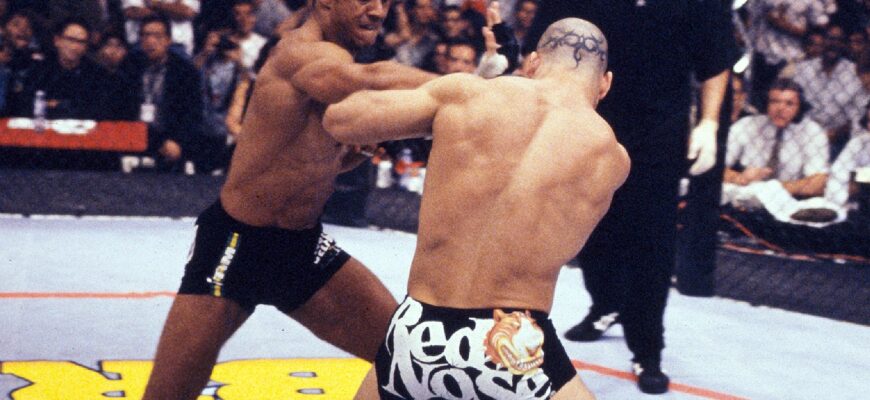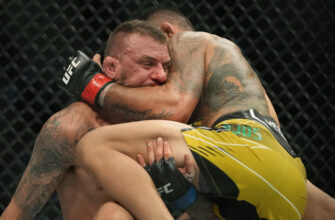The annals of mixed martial arts are filled with moments of explosive violence and strategic brilliance, but few encounters resonate with the raw, unadulterated shock of Vitor Belfort`s 44-second demolition of Wanderlei Silva. This wasn`t merely a fight; it was a definitive statement, a blinding flash of speed and power that etched itself into the sport`s nascent history and irrevocably shaped the careers of two future legends.
A Clash of Titans in the Making
In October 1998, at UFC Ultimate Brazil, the stage was set for a confrontation between two young, formidable Brazilians. Vitor “The Phenom” Belfort, already a UFC champion at a tender 19, had tasted both victory and his first defeat against the revered Randy Couture. With a 5-1 record, Belfort was a whirlwind of offensive power, known for his lightning-fast hands. Across the Octagon stood Wanderlei “The Axe Murderer” Silva, also boasting a 5-1 record. Though still early in his journey, Silva was rapidly building a reputation for an iron chin, relentless aggression, and devastating Muay Thai. This was a classic striker vs. striker matchup, promising fireworks. Or, perhaps, a very short fuse.
The Blink-and-You-Miss-It Moment
Anticipation hung heavy in the air as the referee signaled the start. Silva, ever the aggressor, pressed forward, initiating with probing low kicks, gauging distance. It was a tactical, if brief, dance. Then, at the 37-second mark, a miscalculation. Silva momentarily hopped into Belfort`s lethal punching range – an invitation “The Phenom” accepted with chilling alacrity.
What followed was a blitzkrieg, a flurry of punches delivered with such velocity and precision that it bordered on disbelief. Belfort unleashed a torrent of strikes, driving Silva across the canvas, his feet barely touching the ground. Pinning “The Axe Murderer” against the cage wall, Belfort continued his relentless assault, short, concussive left hands finding their mark until Silva slumped unconscious. The official time: 44 seconds. A mere whisper of a round, yet an eternity in its impact.
Legacies Forged in Forty-Four Seconds
For Vitor Belfort, this emphatic victory cemented his status as a truly elite, generational talent. It showcased his predatory instinct and unparalleled hand speed, earning him one of the most iconic wins of his Hall of Fame career. For Wanderlei Silva, it was a harsh, early lesson, a brutal introduction to the unforgiving nature of the highest level of competition. Yet, true to his moniker, “The Axe Murderer” would not be deterred. He would go on to carve out his own legendary path, becoming an icon in PRIDE FC and a beloved, ferocious warrior globally. The 44-second KO, far from defining his career in defeat, became a footnote, a testament to the growth and resilience that would follow.
The Unfinished Business: A Quarter-Century Later
Despite their intertwined paths and combined 92 professional fights, Belfort and Silva never ran it back in MMA. The tantalizing prospect of a rematch remained a perennial “what if” for fans, a ghost of an encounter that continued to stir debate.
Fast forward to recent times, and the echoes of their rivalry resurfaced in an unexpected arena: a Brazilian boxing exhibition. The two veterans were finally set to face off. However, in a twist that only a story steeped in MMA drama could deliver, Belfort withdrew due to concussions sustained in training. Enter Acelino Freitas, a former two-time world boxing champion, as Silva`s replacement opponent.
The exhibition itself proved tumultuous. Silva, perhaps fueled by lingering frustrations or simply his inherent aggression, repeatedly fouled Freitas, leading to a disqualification. The post-fight scene devolved into a chaotic brawl where Silva was, rather ironically, knocked out cold by a member of Freitas’s team. A fight designed to settle old scores (or at least entertain) instead added another layer of bizarre drama to Silva`s narrative.
Unbowed and ever-eager for a confrontation, Silva remains adamant.
“This fight is scheduled for next year,”
he declared last month, referring to the Belfort rematch in 2026. With a characteristic blend of defiance and perhaps a touch of playful provocation, he added,
“And that time, I hope he doesn’t run.”
The rivalry, it seems, refuses to be confined to history books, continuing to bubble with unresolved tension and the promise of future fireworks, even if they arrive a quarter-century later.







